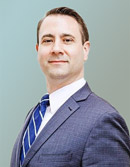Below you will find a real life case study of a couple who is looking for financial advice on how best to arrange their financial affairs. Their names and details have been changed to protect their identity. The Globe and Mail often seeks the advice of our Portfolio Manager & Senior Financial Planner, Matthew Ardrey, to review and analyze the situation and then provide his solutions to the participants.
![]()
Written by:
Special to The Globe and Mail
Published February 2, 2024

David and Greta’s retirement spending goal is $95,000 a year after tax.
David will be 57 this summer and is eager to retire from his $250,000-a-year corporate executive job. He’ll get a defined benefit pension of $63,755 a year partly indexed to inflation.
His wife, Greta, is 55 and already retired. They have an adult son and a mortgage-free house in a province where houses are still reasonably priced.
Their main concern is to set up a steady stream of retirement income in addition to David’s pension. David asks in an e-mail: In what order should they use up their savings and investments? When should they start taking Canada Pension Plan (CPP) and Old Age Security (OAS) benefits?
“Our non-registered stocks and tax-free savings accounts [TFSAs] are invested in dividend-paying stocks that pay around $21,000 a year,” David writes. They manage their own investments. “Would it be beneficial to purchase an annuity?” he asks. They plan to downsize their house at some point to a less expensive place.
Their retirement spending goal is $95,000 a year after tax.
We asked Matthew Ardrey, a financial planner and portfolio manager at TriDelta Financial, to look at David and Greta’s situation. Mr. Ardrey holds the certified financial planner (CFP) and the advanced registered financial planner (RFP) designations.
What the expert says
David and Greta want a second set of eyes on their financial situation to ensure they are well prepared for David’s retirement, Mr. Ardrey says.
They have investments totaling $787,000, plus another $178,000 in cash and guaranteed investment certificates (GICs). Some of the cash will go to complete $100,000 of home renovations over the next two or three years.
“With David retiring in short order, no further savings are expected,” the planner says.
The couple’s expenses are about $95,000 a year and they expect them to remain the same throughout retirement. The planner assumes the couple’s expenses will rise by an average of 3 per cent a year for the duration of the forecast to their age 95
David’s pension plan will pay him $4,555 per month, plus a $760 bridge benefit until he is 65, Mr. Ardrey says. The pension is partly indexed to a maximum of 2 per cent a year.
David is entitled to maximum CPP and OAS benefits. Greta will get full OAS but only 20 per cent of the maximum CPP because she had low income throughout her lifetime.
Should you start collecting CPP at age 65 or earlier? Our CPP calculator compares the benefits.
They ask whether they should buy an annuity instead of having an investment portfolio, the planner notes. “Given that they already have a DB pension, which is an annuity, plus their government benefits, it would be better for their financial flexibility to retain their investment accounts instead of locking up their savings in an annuity,” Mr. Ardrey says.
They ask whether they should defer CPP to age 70 or take it at 65. After running the numbers through his financial planning software, the planner concludes it is better financially for them to take CPP and OAS at age 70 than 65. This is the assumption used in his forecast.
Greta and David plan to downsize their home, valued at $700,000, to a place worth $450,000 in today’s dollars. The plan is to make this move in about 10 years.
Greta and David’s portfolio – apart from the cash and GICs set aside for the house reno – is 70 per cent stocks, 27 per cent balanced funds and 3 per cent cash. “If we assume a 50/50 stock/bond split in the balanced funds, that places them at almost 84 per cent stocks,” Mr. Ardrey says. “This introduces undue volatility risk to their retirement plan.”
About 45 per cent of their investment portfolio is in high-cost retail mutual funds with investment costs of 2 per cent-plus, he says. This makes their net return under these circumstances 4.35 per cent.
“With a straight-line, or consistent, return projection, they can make their retirement plan,” Mr. Ardrey says.
But life and investments rarely move in a straight line. “To ensure the viability of this plan, we stress test it by using a Monte Carlo simulation,” he says. This introduces randomness to a number of factors including returns to stress test the success of a retirement plan.
“In this plan, we have run 1,000 iterations with the financial planning software to get the results,” the planner says. For a plan to be considered “likely to succeed” by the program, it must have at least a 90-per-cent success rate, meaning at least 900 trials out of 1,000 succeed. If it is below 60 per cent, then it is considered “unlikely to succeed” and in between is “somewhat likely.”
Based on the assumptions in the initial projection, the probability of success is 72 per cent, or “somewhat likely.” David and Greta can make some changes to improve their chances of retirement success, he says.
“First, we need to move them out of the 2-per-cent-plus investment cost portfolio,” Mr. Ardrey says.
Next, they should be maximizing their TFSA savings. There is nothing in their current budget for it, but these savings could be made by transferring non-registered investments into their TFSAs for future tax-free growth and withdrawals.
With the deferral of government pensions, they would benefit from melting down their registered retirement savings plans (RRSPs) before they start receiving these payments at age 70, the planner says. Their current plan involves drawing down the non-registered assets. Though these assets would be needed to supplement the RRSPs, Greta should draw down $40,000 per year from her RRSP until CPP and OAS start.
“We would suggest that they engage the services of a portfolio manager with a focus on income generation,” Mr. Ardrey says. “There are many solid investment options with strong yields that when combined with some moderate growth can earn returns in the 6-per-cent range,” he adds. “This can be done in such a way that they lower their volatility risk, which also improves the Monte Carlo analysis results.”
With these changes, the Monte Carlo analysis improves to 100-per-cent success without any other changes to their retirement plans, he says.
Client situation
The people: David, 56, and Greta, 55
The problem: Arranging their finances to generate a steady income stream to supplement David’s pension. When do they take government benefits? Should they buy an annuity?
The plan: Greta taps her RRSP until their government benefits kick in. Take steps to lower their investment costs. Pass on the annuity but consider hiring a professional money manager to improve their returns.
The payoff: A steady, tax-efficient income stream that will last a lifetime.
Monthly net income: $12,885.
Assets: Cash and equivalents $178,000; non-registered stocks $145,000; his TFSA $89,000; her TFSA $106,000; his RRSP $212,000; her RRSP $312,000; residence $700,000. Total: $1.7-million.
Estimated present value of his DB pension: $1,331,310 (using 2-per-cent indexing and a 5-per-cent discount rate). This is how much a person with no pension would have to save to generate the same cash flow.
Monthly outlays: Property tax $490; water, sewer, garbage $60; home insurance $255; electricity $550; heating $60; security $50; maintenance $490; garden $120; vehicle insurance $215; fuel $365; oil, maintenance $145; groceries $925; clothing $60; gifts $120; charity $365 vacation, travel $1,425; dining, drinks, entertainment $730; personal care $120; subscriptions $60; doctors, dentists, prescriptions $180; vitamins $60; health, dental insurance $425; life insurance $185; cellphones $215; internet $245. Total: $7,915.
Liabilities: None.
Want a free financial facelift? E-mail finfacelift@gmail.com.
Some details may be changed to protect the privacy of the persons profiled.

Matthew Ardrey
Portfolio Manager & Senior Financial Planner
matt@tridelta.ca
(416) 733-3292 x230
